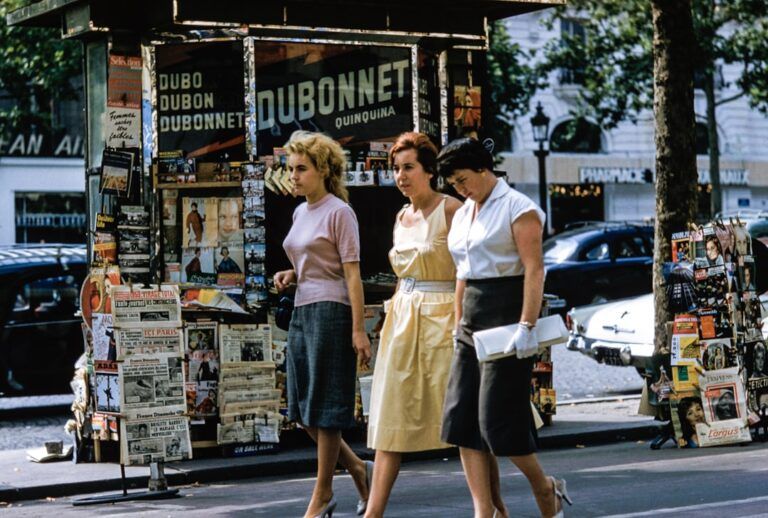The Thermos War is a battle that has been raging for decades between two of the most iconic brands in the industry: Thermos and Stanley. Both companies have been producing high-quality insulated containers for keeping beverages and food hot or cold for extended periods of time. The competition between these two brands has led to continuous innovation and improvement in their products, as well as aggressive marketing strategies to win over consumers. This article will delve into the history of these competing brands, compare their products, analyze their marketing strategies, and explore consumer reviews and loyalty. Additionally, we will discuss future trends and innovations in the insulated container industry to determine the potential winner of the Thermos War.
Key Takeaways
- The Thermos War is a battle between competing brands to dominate the market for insulated food and beverage containers.
- The history of the competing brands, such as Thermos and Stanley, dates back to the early 20th century and has been marked by innovation and fierce competition.
- Product comparison reveals that both brands offer similar features and benefits, including vacuum insulation and durable construction.
- Marketing strategies and branding play a crucial role in differentiating the competing brands and attracting consumers.
- Consumer reviews and loyalty indicate that both brands have a strong following, with customers praising the performance and reliability of their products.
History of the Competing Brands
Thermos, originally known as the “Dewar flask,” was invented in 1892 by Sir James Dewar, a Scottish scientist. The vacuum flask was later trademarked as “Thermos” and became a household name for insulated containers. The company has since expanded its product line to include a wide range of insulated bottles, food jars, and coolers. On the other hand, Stanley has a rich history dating back to 1913 when William Stanley Jr. invented the all-steel vacuum bottle. This invention revolutionized the way people kept their beverages hot or cold while on the go. Stanley has continued to innovate and expand its product offerings to include food jars, mugs, and coolers, all designed to withstand the toughest outdoor conditions. Both brands have a long-standing reputation for producing durable, reliable, and high-performance insulated containers, making them fierce competitors in the market.
Product Comparison: Features and Benefits
When comparing the products of Thermos and Stanley, it’s essential to consider the features and benefits that set them apart. Thermos offers a wide range of insulated containers designed for everyday use, outdoor adventures, and travel. Their products are known for their sleek designs, innovative technology, and superior insulation properties. The Thermos vacuum insulation technology ensures maximum temperature retention, keeping beverages hot for up to 12 hours or cold for 24 hours. Additionally, many Thermos products come with convenient features such as push-button lids, built-in tea infusers, and integrated handles for easy carrying. On the other hand, Stanley’s products are built for rugged durability and outdoor performance. Their classic green hammertone finish is iconic and instantly recognizable. Stanley’s insulated containers are designed to withstand harsh conditions, making them ideal for camping, hiking, and other outdoor activities. The brand’s double-wall vacuum insulation keeps drinks hot or cold for hours on end, while the leak-proof lids and durable construction ensure long-lasting performance in any environment.
When it comes to choosing between Thermos and Stanley, consumers can expect top-notch quality and performance from both brands. Thermos excels in providing sleek designs and innovative features for everyday use, while Stanley is renowned for its rugged durability and outdoor performance. Whether you’re looking for a stylish commuter mug or a heavy-duty thermos for your next camping trip, both brands have a wide range of products to suit every need.
Marketing Strategies and Branding
The marketing strategies and branding efforts of Thermos and Stanley have played a significant role in the Thermos War. Both companies have invested heavily in advertising, sponsorships, and partnerships to promote their products and reach a wider audience. Thermos has focused on creating sleek, modern designs that appeal to urban consumers while highlighting the advanced insulation technology that sets their products apart. The brand has also collaborated with popular influencers and celebrities to showcase their products in lifestyle settings, further enhancing their appeal to a younger demographic. On the other hand, Stanley has maintained its rugged, outdoor image by partnering with adventure sports athletes, outdoor enthusiasts, and conservation organizations. The brand’s marketing efforts emphasize the durability and reliability of their products in extreme conditions, appealing to consumers who value performance and toughness.
In terms of branding, both Thermos and Stanley have established themselves as industry leaders with a strong reputation for quality and innovation. Thermos has positioned itself as a modern lifestyle brand with a focus on urban convenience and cutting-edge technology. In contrast, Stanley has maintained its heritage as a trusted companion for outdoor adventures with a timeless design that resonates with nature enthusiasts and explorers. The branding efforts of both companies have successfully differentiated their products in the market, catering to different consumer preferences and lifestyles.
Consumer Reviews and Loyalty
Consumer reviews play a crucial role in determining the success of any brand, especially in a competitive market like insulated containers. Both Thermos and Stanley have garnered a loyal following of satisfied customers who praise the performance, durability, and design of their products. Thermos has received accolades for its sleek and stylish designs, as well as its advanced insulation technology that keeps beverages hot or cold for extended periods. Consumers appreciate the convenience and reliability of Thermos products for everyday use, whether at home, work, or on the go. Similarly, Stanley has built a strong reputation for its rugged durability and outdoor performance, earning praise from outdoor enthusiasts, campers, and hikers. The brand’s classic design and superior insulation properties have made it a favorite among those who value reliability and toughness in their insulated containers.
Loyalty towards these brands is evident in the repeat purchases and positive word-of-mouth recommendations from satisfied customers. Many consumers have expressed their loyalty to either Thermos or Stanley based on their specific needs and preferences. Whether it’s the sleek design and urban appeal of Thermos or the rugged durability and outdoor performance of Stanley, both brands have successfully cultivated a loyal customer base that continues to support and advocate for their products.
Future Trends and Innovations

As the insulated container industry continues to evolve, both Thermos and Stanley are expected to stay ahead of the curve with future trends and innovations. One emerging trend is the focus on sustainability and eco-friendly materials in product design. Consumers are increasingly seeking reusable and environmentally conscious options for their insulated containers, prompting brands to explore new materials and manufacturing processes. Additionally, smart technology integration is another area of innovation that could shape the future of insulated containers. Features such as temperature monitoring, Bluetooth connectivity, and personalized settings could revolutionize the way people use and interact with their insulated containers.
In terms of product innovation, both Thermos and Stanley are likely to continue improving their insulation technology to achieve even longer temperature retention. This could involve advancements in materials, construction techniques, and design elements to maximize thermal efficiency. Furthermore, customization options such as personalized colors, patterns, and accessories may become more prevalent as brands seek to offer unique and tailored experiences for consumers. Overall, the future of insulated containers is poised for exciting developments that will further enhance the performance, convenience, and sustainability of these essential products.
The Winner of the Thermos War
In conclusion, the Thermos War between Thermos and Stanley has resulted in a diverse range of high-quality insulated containers that cater to different consumer needs and preferences. While both brands have their strengths in terms of design, performance, and branding, it’s challenging to declare a clear winner in this ongoing battle. Thermos excels in providing sleek designs and innovative features for everyday use, appealing to urban consumers with advanced insulation technology. On the other hand, Stanley is renowned for its rugged durability and outdoor performance, resonating with nature enthusiasts who value reliability in extreme conditions.
Ultimately, the winner of the Thermos War depends on individual consumer preferences and specific use cases. Whether you prioritize style and convenience or durability and performance, both Thermos and Stanley offer top-notch products that deliver on their promises. As these brands continue to innovate and adapt to future trends in the industry, consumers can expect even more exciting options for keeping their beverages hot or cold on the go.
If you’re interested in learning more about coffee thermoses, you should check out this article on the best small coffee thermos for the busy person on the go. It provides great insights into finding the perfect thermos for your on-the-go coffee needs, which could come in handy during the Battle of the Brands: Thermos War.
FAQs
What is the Battle of the Brands: Thermos War article about?
The article discusses the competition between different brands in the thermos industry, highlighting their efforts to outdo each other in terms of product features, quality, and marketing strategies.
Which brands are involved in the Thermos War?
The article focuses on the competition between well-known thermos brands such as Thermos, Yeti, Stanley, and Hydro Flask, among others.
What are some of the key factors driving the competition among thermos brands?
The competition among thermos brands is driven by factors such as innovation in product design, the use of advanced materials, the development of new technologies, and the creation of appealing marketing campaigns.
How do thermos brands differentiate themselves from one another?
Thermos brands differentiate themselves through various means, including the introduction of unique features, the use of different materials, the offering of different sizes and designs, and the implementation of distinct branding and marketing strategies.
What are some of the popular products offered by the competing thermos brands?
Popular products offered by the competing thermos brands include insulated water bottles, travel mugs, food jars, coolers, and other types of insulated containers designed to keep beverages and food items hot or cold for extended periods.
How do consumers benefit from the competition among thermos brands?
Consumers benefit from the competition among thermos brands through the availability of a wide range of high-quality products with innovative features, improved performance, and competitive pricing. The competition also encourages brands to focus on customer satisfaction and product reliability.






